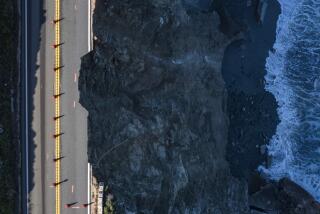Post-tornado tourism map reopens wounds

Much of the post-tornado rubble has been removed from Joplin, Mo. But for the city’s residents, a six-mile scar of house foundations and turned-up dirt serves as a raw and sorrowful reminder of the epic twister that killed 161 people and destroyed thousands of homes as it swept through around dinner time May 22.
While the community struggles to rebuild, a flap is playing out on Facebook over a map created by the local tourism agency that points out-of-towners to hard-hit areas in the tornado’s path. Some residents in this city of about 50,000 are upset by the numbered points of interest and cheery tourism logo superimposed over so much suffering.
“The vast majority of us were unaware the maps existed,” says Aaron Durall, a lifelong Joplin resident and local photographer who calls the map “tacky and tasteless.” “From my perspective, I would just like more time. Give the community at least a year before we consider something like this.”
The Joplin Convention & Visitors Bureau, which created the map that was distributed at hotels and the city’s welcome center, sees it differently: It’s a way to begin to tell the story of what happened here.
Disaster tourism, as it’s called, isn’t new. People went on organized tours to see devastated parts of New Orleans just four months after Hurricane Katrina hit and the levees failed in 2005. Big disasters like Joplin’s deadly twister draw people who come to gawk at nature’s fury — either out of morbid curiosity or to pay their respects.
But is it appropriate to drive by and snap photos of a community’s tragedy while its wounds are healing? After radio news station 1310 KZRG posted the map on its Facebook page in mid-January, residents responded to that very issue.
“This is my apartment, this is my car … my heart aches that someone used it without thought of my feelings,” Nancy Cornish posted on Jan. 16 in response to one of the pictures on the map.
“The #5 spot is directly over my apartment. It still makes me feel physically ill when I have to drive past it. It was the first apartment I had all on my own. How dare they send tourists to my home that was stolen from me? This is sickening,” Carolyn J. Lamson wrote Jan. 18.
Durall launched a Facebook page called Joplin Citizens Against Tornado Tours, which has attracted more than 700 fans and given people a place to vent about the map and the actions of the Joplin Convention & Visitors Bureau.
Patrick Tuttle, director of the bureau, dismisses suggestions that the agency’s map exploits the disaster. “Never have we gone after promoting loss of life, someone’s personal damages,” he says.
Tuttle instead talks about “recovery tourism” and the almost 18,000 volunteers who have come — and will continue to come — to help. The map, as he sees it, is a chance to give an accurate account of Joplin’s disaster and recovery.
Joplin was never much of a tourist destination but rather a travel stop off Interstate 44 for many travelers heading to entertainment center Branson, Mo. Now, Tuttle says, they stop for other reasons.
“People don’t realize they [tourists] are already pulling off and taking a look,” he says. “The Joplin Welcome Center saw folks who said they want to stay in Joplin to help the economy.”
Jennifer Day-Sully, communications director of the New Orleans Convention & Visitors Bureau, understands what the community is going through because of her city’s experience after Katrina. “This is a very touchy subject, and you have to approach it with the utmost sensitivity,” she says. “You walk a fine line in the recovery process.”
But who gets to tell Joplin’s tornado story — and it’s an ever-changing story — and when takes time. Two destroyed buildings highlighted on the map — St. John’s Regional Medical Center and the local high school — are scheduled to be demolished by late summer. Soon there won’t be much rubble to see.
Tuttle says the agency has run out of the maps at some locations, and the visitors bureau board has decided to hold off reprinting them. Maybe it will be revised for the one-year anniversary, and maybe it will be a different map that reflects a different moment in Joplin.
“What happened at 5:41 p.m. on May 22 is in the history books,” he says. “What happens after 5:41 p.m. on May 22 is about what people have done since then.”
More to Read
Sign up for The Wild
We’ll help you find the best places to hike, bike and run, as well as the perfect silent spots for meditation and yoga.
You may occasionally receive promotional content from the Los Angeles Times.







